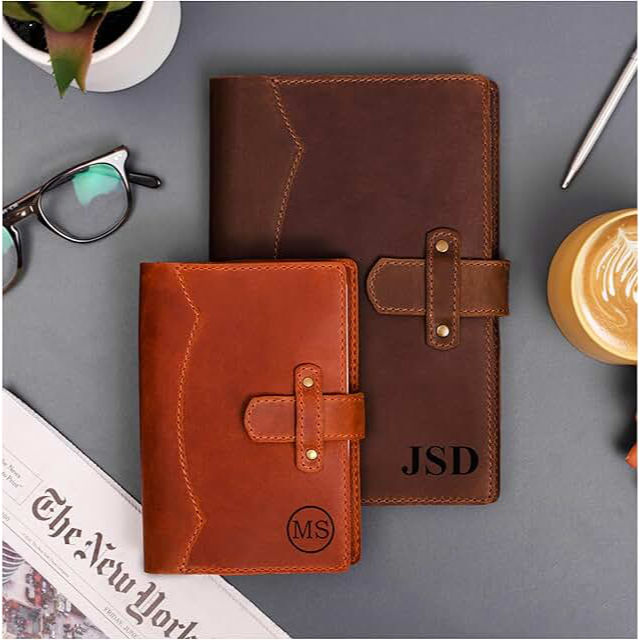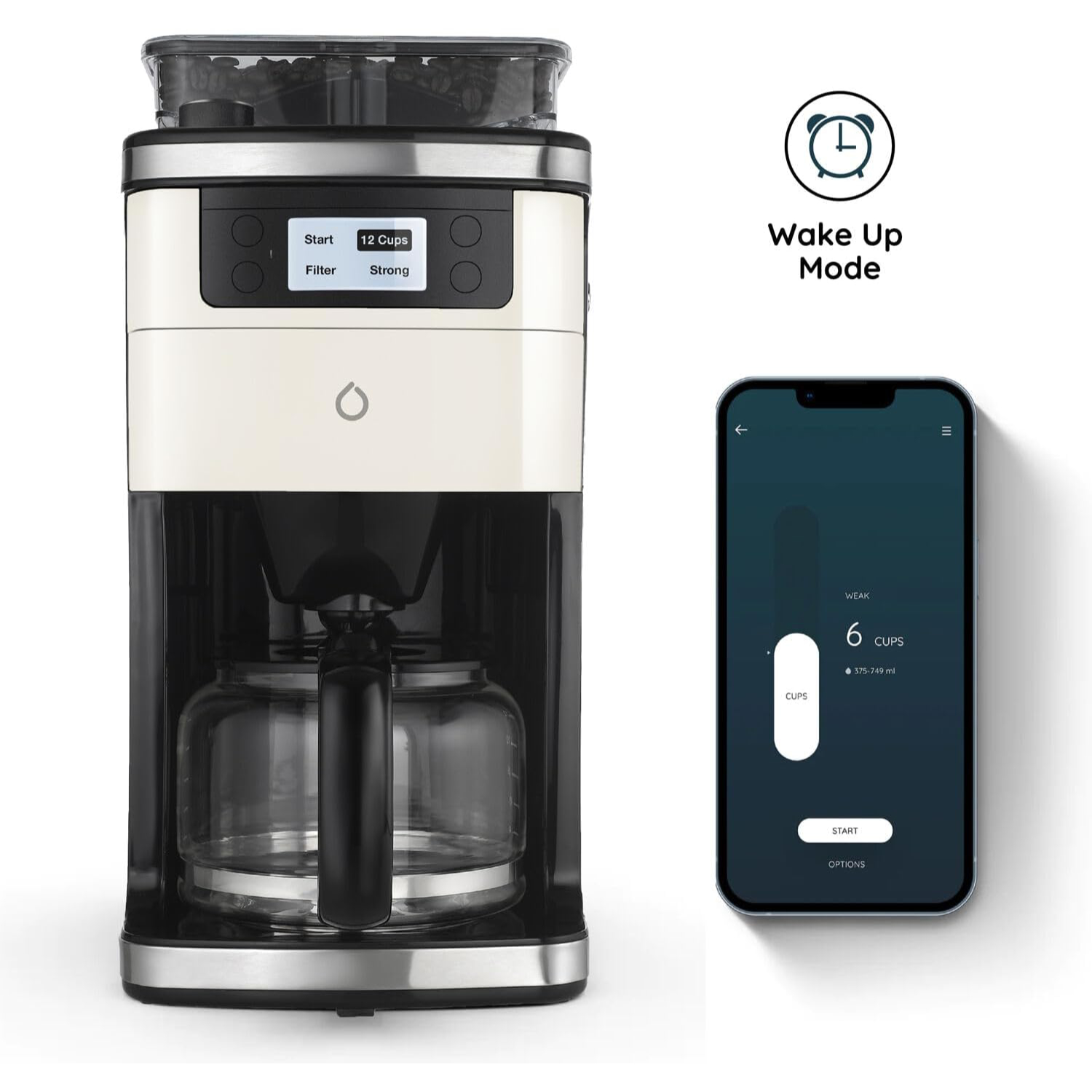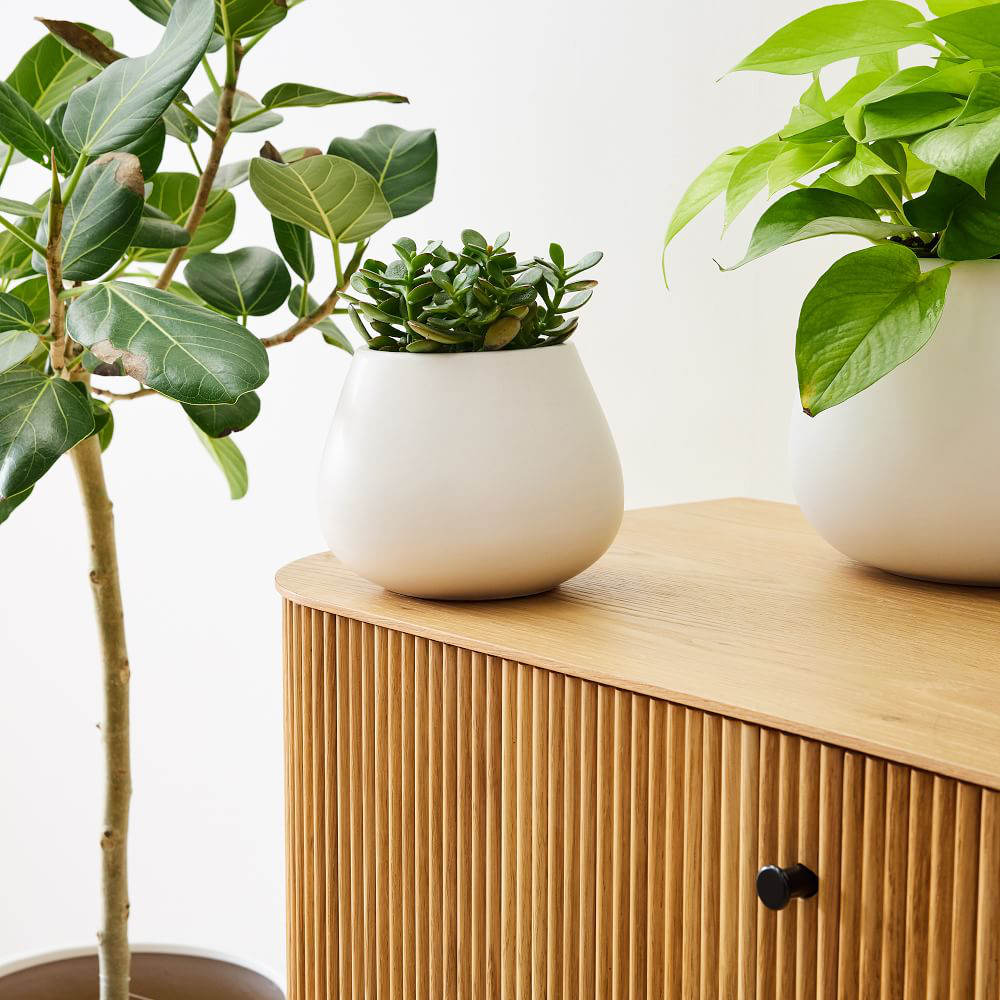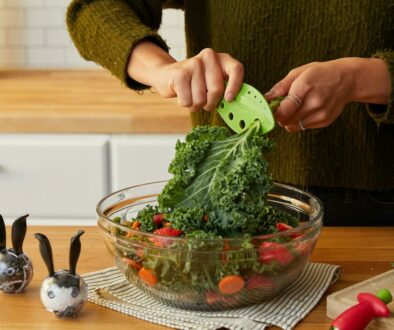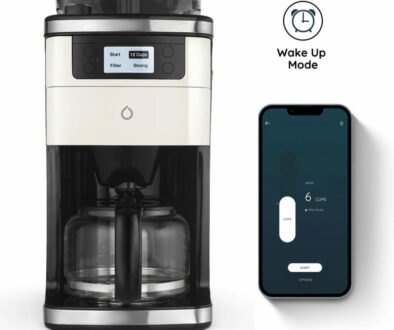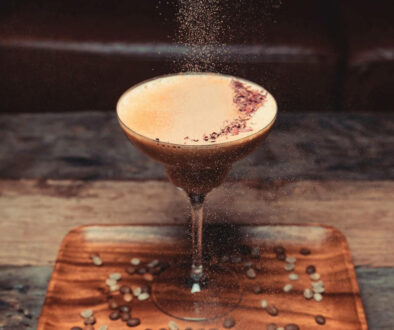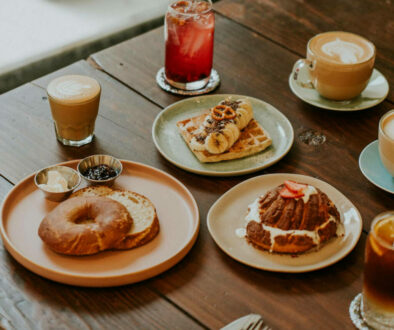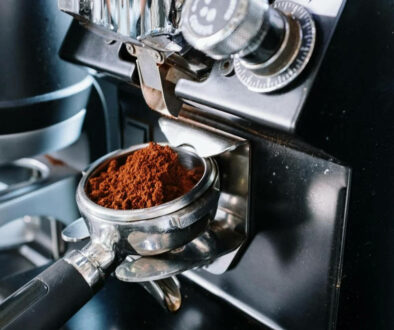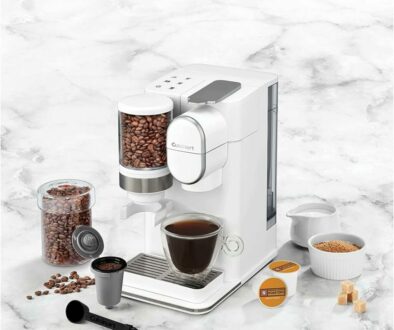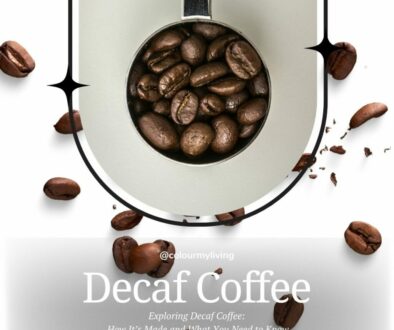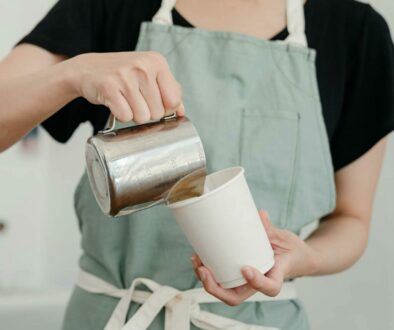How Different Brewing Temperatures Impact Your Coffee’s Flavour
When it comes to brewing coffee, temperature isn’t just a number—it’s a gateway to flavour. Every degree you adjust impacts the aromas, textures, and taste notes in your cup, transforming a simple drink into a sensory experience. A few degrees higher can amplify boldness and richness, while cooler temperatures might let delicate, floral, or fruity notes shine.
Whether you’re a pour-over enthusiast, espresso lover, or cold brew connoisseur, understanding how temperature influences coffee’s flavour opens up a world of possibilities. In this guide, we’ll explore how subtle changes in brewing temperature can bring out the best in different beans, enhance your favourite brewing methods, and help you find your ideal cup. So grab your thermometer and get ready to discover just how powerful temperature can be in crafting your perfect coffee!
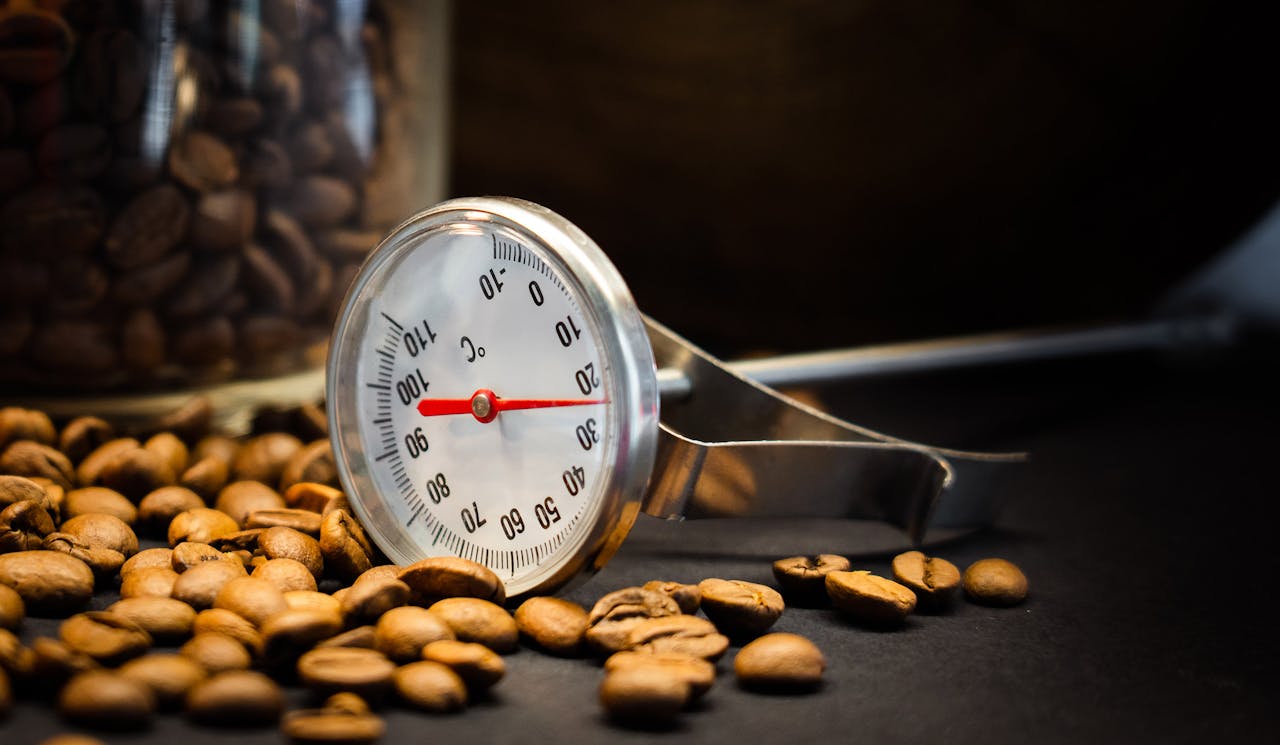
Search Coffee Thermometer on Amazon
The Science Behind Brewing Temperature
Brewing coffee is a delicate dance of chemistry, physics, and flavour, and temperature plays a starring role. At its core, brewing is about extraction: the process of pulling flavours, oils, acids, and aromas out of the coffee grounds and into your cup.
But not all these compounds are extracted equally—some dissolve quickly at lower temperatures, while others need a bit more heat to be released. Let’s break down how temperature impacts each part of the process.
How Temperature Affects Extraction
When hot water meets coffee grounds, it starts to dissolve a range of soluble compounds, each contributing something unique to the flavour profile. Here’s how temperature affects this process:
Low Temperatures: Lower temperatures tend to extract more acidic, fruity, and floral flavours, giving your coffee a brighter, more delicate profile. However, if the water is too cool, it might under-extract the coffee, leading to a sour or flat taste.
Higher Temperatures: Hotter water dissolves compounds more quickly, bringing out bolder, richer flavours and even some bitterness. This is ideal for those who enjoy a strong, full-bodied coffee, but too high a temperature can result in an overly bitter or burnt taste.
Balancing Temperature and Brewing Time
Temperature and time go hand-in-hand when brewing coffee. Higher temperatures speed up extraction, so if you’re using very hot water, a shorter brewing time is usually better to avoid over-extraction. On the flip side, if you prefer to use a slightly lower temperature, you can extend the brew time to achieve a fuller flavour. This balance is why each brewing method, from a quick espresso to a slow cold brew, has its own ideal temperature and timing.
Temperature’s Influence on Acidity, Sweetness, and Bitterness
The flavours in coffee come from a delicate mix of acidity, sweetness, and bitterness. Here’s how temperature interacts with each:
Acidity: Acids are among the first compounds to dissolve in hot water, so lower temperatures tend to highlight acidity, making coffee taste bright and sometimes even fruity.
Sweetness: As temperature increases, more sugars and complex flavours dissolve, which adds sweetness and balance. The ideal brew temperature usually brings out a harmonious sweetness without overpowering acidity.
Bitterness: At very high temperatures, bitterness becomes more pronounced, as compounds like chlorogenic acids break down into bitter-tasting byproducts. This is often desirable in dark roasts but can be too much for lighter beans.
Understanding the science behind brewing temperature allows you to experiment and tailor your brew to your taste. Each coffee bean has unique flavour characteristics, and with the right temperature adjustments, you can bring out the very best in each cup.
The relationship between brewing temperatures and taste profiles can be summarised in the table below:
| Temperature Range (°F) | flavour Characteristics | Best for |
|---|---|---|
| 175°F – 190°F (79°C – 88°C) |
Highlights acidity; brings out fruity and floral notes; lighter body | Light roasts, pour-over, AeroPress |
| 190°F – 205°F (88°C – 96°C) |
Balanced extraction; enhances sweetness and acidity; full flavour | Medium roasts, drip coffee, French press |
| 205°F – 212°F (96°C – 100°C) |
Intensifies body and boldness; enhances chocolatey, nutty, and smoky notes; may introduce bitterness | Dark roasts, espresso, immersion brewing |
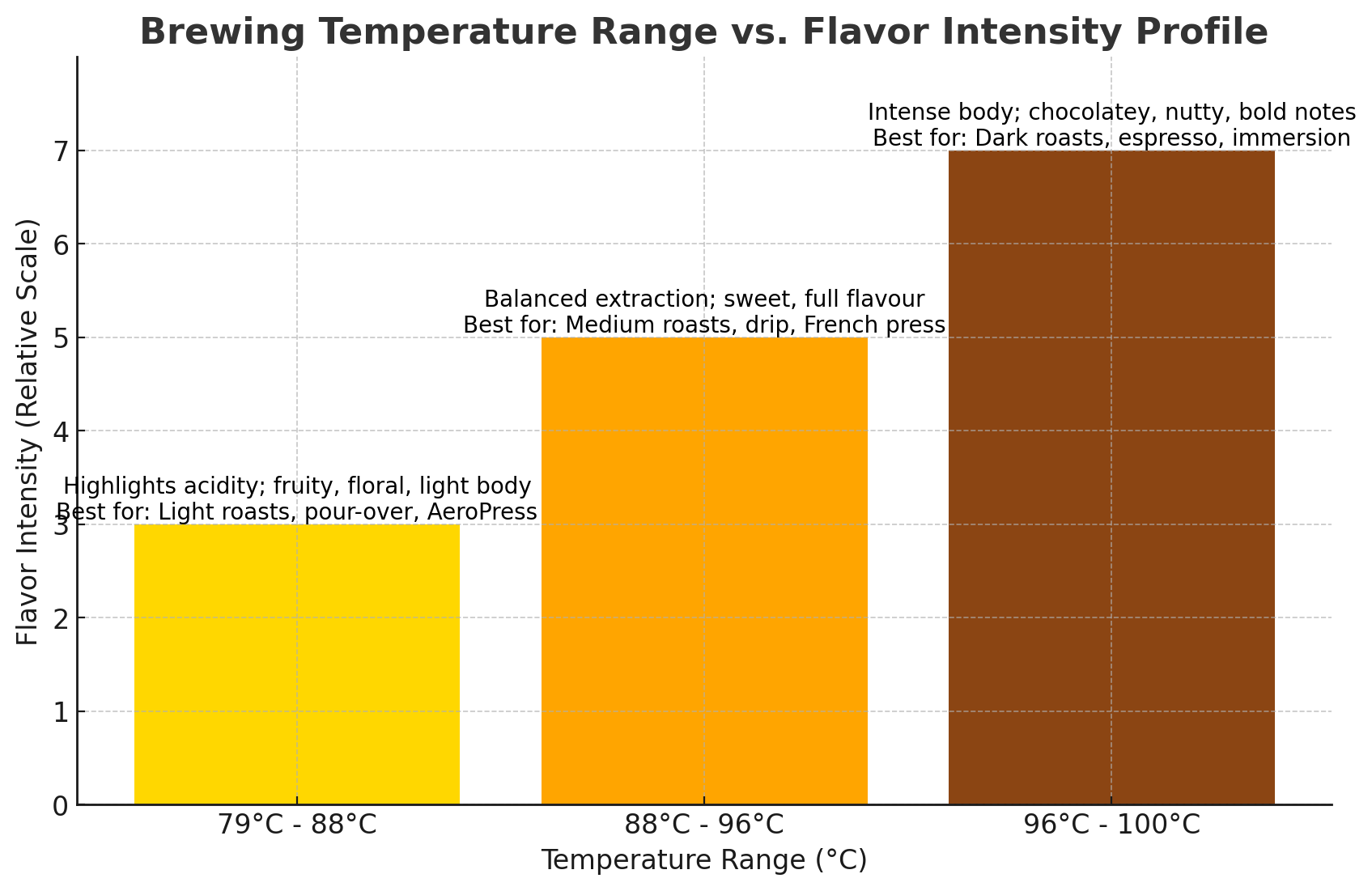
Ideal Temperature Ranges for Different Brewing Methods
Every brewing method has its own sweet spot for temperature, balancing flavour extraction, brew time, and the unique characteristics of each technique. Below, we’ll explore ideal temperature ranges for popular brewing methods and how they impact the resulting flavour profile.
Pour-Over & Drip Coffee
195°F – 205°F (90°C – 96°C)
Pour-over and drip brewing involve a steady flow of water passing through coffee grounds. A temperature range of 195°F – 205°F allows for a balanced extraction, bringing out both brightness and sweetness without overpowering bitterness.
flavour Profile: This range enhances the complex acidity and subtle sweetness in light to medium roasts, providing a clean, vibrant cup.
Tips: Use slightly cooler water if your beans have bright, fruity notes to prevent overpowering acidity, and closer to 205°F if you’re looking to bring out richer body and sweetness.
Espresso
198°F – 205°F (92°C – 96°C)
Espresso’s short, high-pressure brewing process requires a higher temperature range to achieve complete extraction quickly. Temperatures in this range help intensify flavour, bringing out the coffee’s full-bodied and complex notes.
Flavour Profile: Higher temperatures amplify bold flavours and increase body, enhancing chocolatey, nutty, and caramelized notes, especially in dark roasts.
Tips: Adjusting within this range can significantly impact your espresso’s taste. If you prefer a brighter shot, aim closer to 198°F. For more robust, intense flavours, use the upper end of the range.
Cold Brew
35°F – 70°F (2°C – 21°C)
Cold brew uses cold or room-temperature water with an extended brewing time, usually 12-24 hours. This low temperature slows extraction, resulting in a smoother, less acidic drink.
Flavour Profile: Cold brew highlights chocolate, nutty, and caramel notes while minimizing acidity, making it naturally sweeter and less bitter.
Tips: Keep in mind that while low temperatures are typical, you can experiment with slightly warmer water if you want to reduce steeping time while preserving the cold brew’s smoothness.
French Press & Immersion Methods
195°F – 205°F (90°C – 96°C)
Immersion methods, like the French press, keep coffee grounds in contact with hot water for an extended period, allowing fuller flavour extraction. The ideal temperature range of 195°F – 205°F ensures a rich, full-bodied brew without excessive bitterness.
Flavour Profile: Produces a robust, velvety mouthfeel with deeper, more developed flavours. Suitable for medium to dark roasts that benefit from the press’s natural strength and body.
Tips: To minimize sediment and achieve a cleaner cup, consider slightly lowering the temperature to avoid over-extraction, especially if you’re using a fine grind.
AeroPress
175°F – 205°F (79°C – 96°C)
The AeroPress is incredibly versatile, accommodating various temperatures depending on your desired flavour profile. With a range from 175°F for delicate, tea-like brews to 205°F for richer, espresso-style shots, it adapts to different coffee preferences.
Flavour Profile: Lower temperatures yield lighter, nuanced flavours with brighter acidity, while higher temperatures result in a fuller body with bold, concentrated notes.
Tips: Try experimenting with both lower and higher temperatures to see what you prefer, as the AeroPress allows for rapid adjustments in brew time and water-to-coffee ratio.
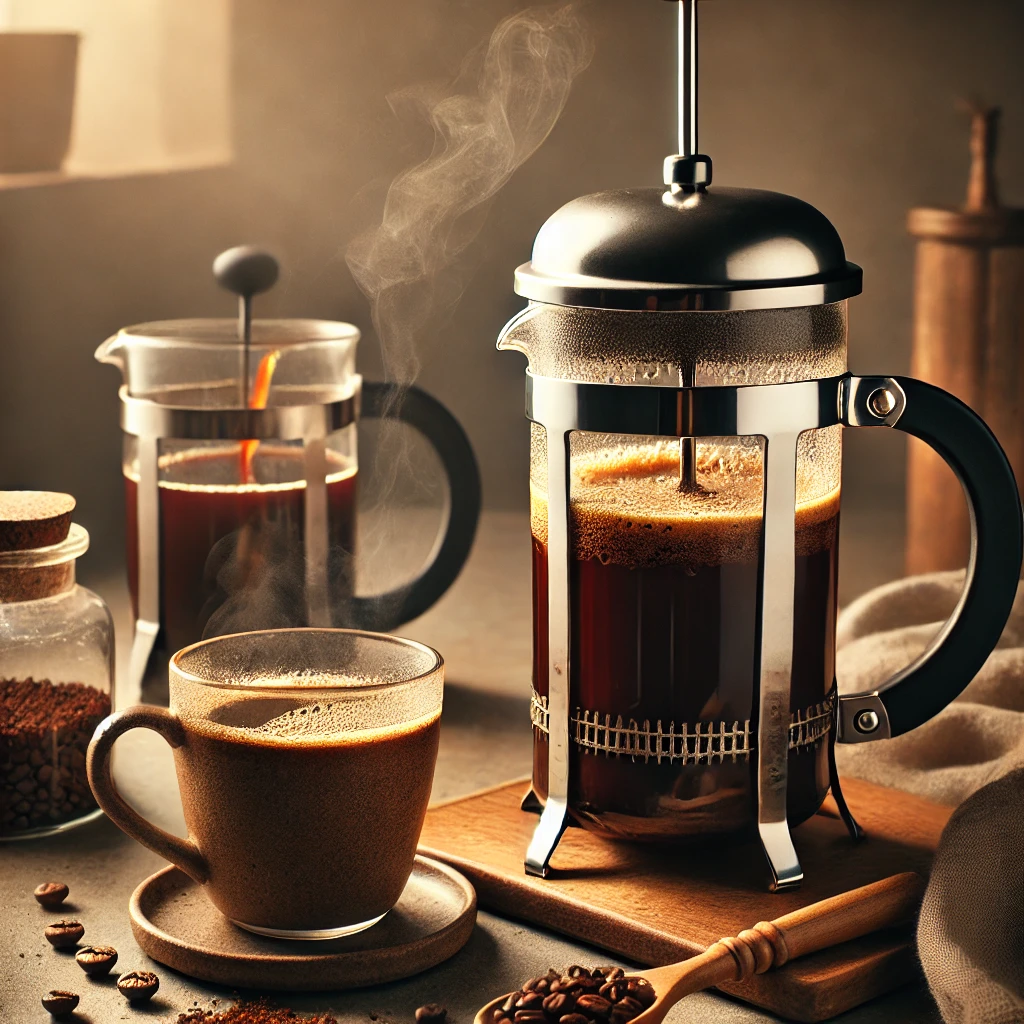
Each brewing method has an optimal temperature that brings out the best flavours, from smooth and balanced in pour-overs to bold and intense in espresso. Experimenting within these temperature ranges allows you to fine-tune your coffee experience based on your favourite flavours and brewing style.
Use the following reference table for the right brewing temperature depending for each brewing method and the resulting taste profile.
| Brewing Method | Ideal Temperature Range (°F) | Taste Profile |
|---|---|---|
| Pour-Over & Drip | 195°F – 205°F | Balanced extraction with vibrant acidity and subtle sweetness; clean and complex flavours. |
| Espresso | 198°F – 205°F | Full-bodied with bold flavours; highlights chocolatey, nutty, and caramel notes, especially in dark roasts. |
| Cold Brew | 35°F – 70°F | Smooth, low acidity; naturally sweet with chocolate, nutty, and caramel flavours. |
| French Press | 195°F – 205°F | Rich and robust; full-bodied with deep flavours, especially suitable for medium to dark roasts. |
| AeroPress | 175°F – 205°F | Versatile; lower temps offer bright, delicate flavours, while higher temps create a fuller, bold profile. |
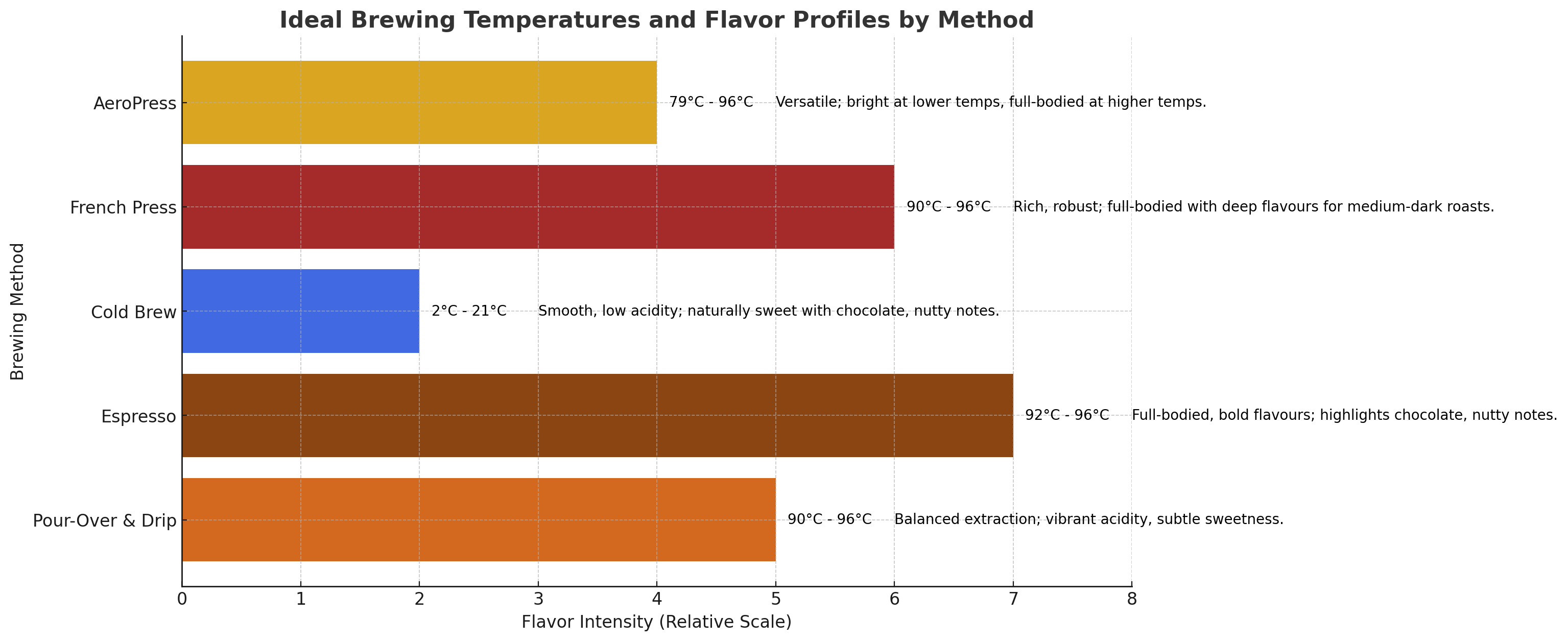
How Temperature Impacts Flavour Profiles
Temperature plays a critical role in shaping the flavour of your coffee, as different compounds within the coffee grounds dissolve at various temperatures. Adjusting the temperature can highlight or mute specific flavours, allowing you to customize your brew to your liking. Let’s explore how different temperature ranges influence key flavour characteristics in coffee.
Lower Temperatures
175°F – 190°F (79°C – 88°C)
Flavour Profile: Lower brewing temperatures tend to bring out the acidity and brightness in coffee. You’ll often notice fruity, floral, and citrus notes shining through, which is why this range is ideal for lighter roasts.
Resulting Taste: These temperatures create a light-bodied coffee with a crisp, delicate flavour and minimal bitterness. However, if the temperature is too low, the coffee may taste under-extracted and sour.
Best Use: Lower temperatures are perfect for highlighting nuanced, complex flavours in high-quality light roasts or single-origin coffees.
Medium Temperatures
190°F – 205°F (88°C – 96°C)
Flavour Profile: In the medium range, there’s a balanced extraction, which draws out both acidity and sweetness. This range helps enhance the coffee’s natural sugars and produces a harmonious, well-rounded cup with depth and complexity.
Resulting Taste: Medium temperatures create a balanced profile where acidity, sweetness, and body all come together without overpowering each other. This is the go-to range for most coffee enthusiasts, as it brings out the best in most roasts.
Best Use: This range works well for medium roasts and blends, where you want a fuller flavour with balanced brightness and sweetness.
Higher Temperatures
205°F – 212°F (96°C – 100°C)
Flavour Profile: Higher temperatures extract more of the heavier, bold compounds, leading to a full-bodied, intense brew. This range is excellent for dark roasts, where richer, chocolatey, nutty, and smoky flavours are desirable.
Resulting Taste: High temperatures yield a robust cup with bold flavours and increased bitterness. If pushed too far, the coffee can taste slightly over-extracted, with a burnt or bitter edge.
Best Use: Use this range for dark roasts, espresso, and when you want a strong, rich coffee with minimal acidity.
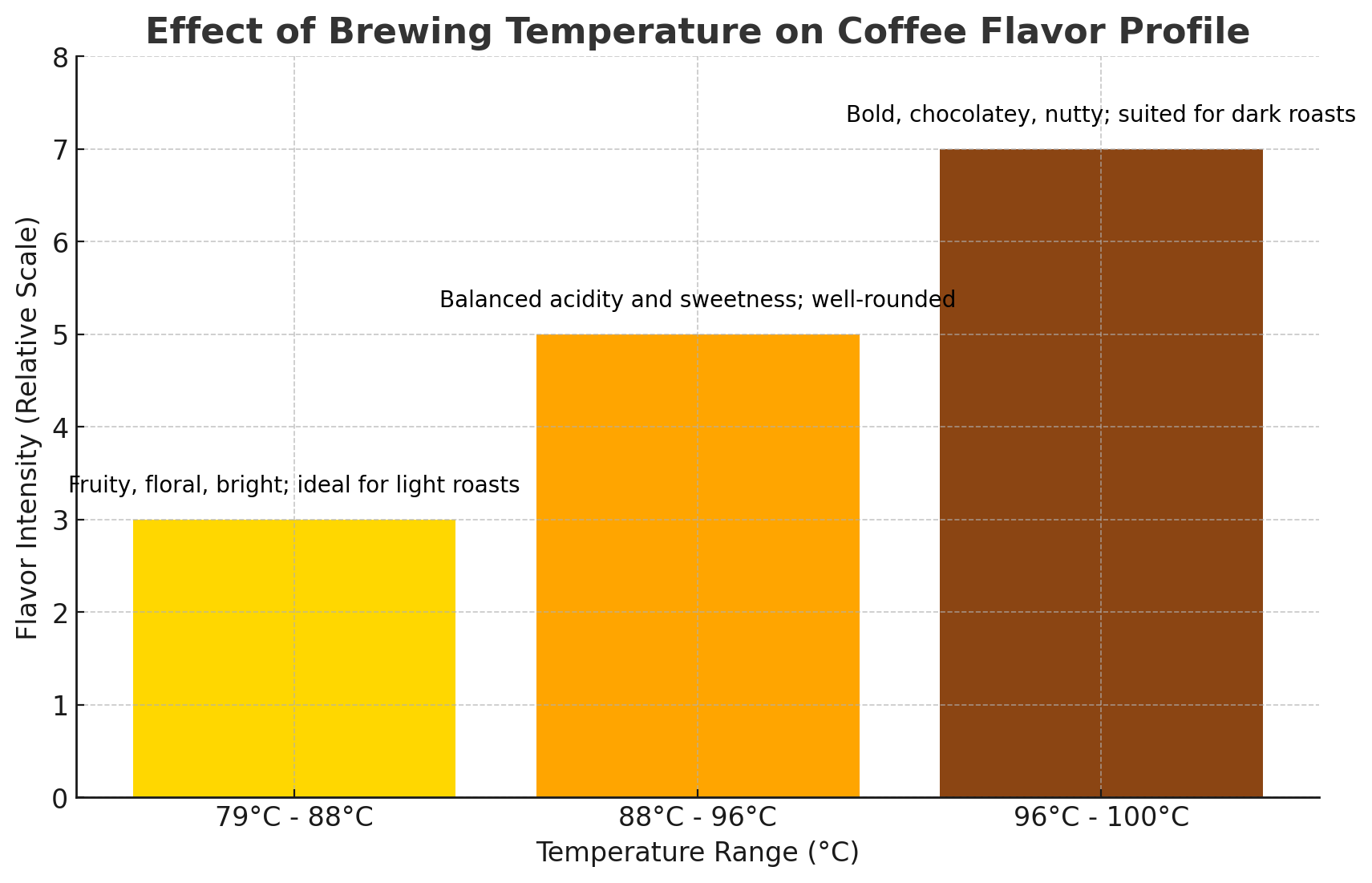
Experimenting with temperature allows you to personalize each brew. For example, a slightly lower temperature will create a bright, light-bodied coffee, while a higher temperature enhances body and depth. Adjusting your brew temperature is a great way to explore and appreciate the unique flavours that different beans have to offer.
Matching Temperature to Coffee Bean Characteristics
Every coffee bean is unique, with specific flavours that can be highlighted or subdued by adjusting the brewing temperature. Different roasts, origins, and processing methods yield a range of flavours, so matching your brew temperature to the characteristics of the beans allows you to bring out the best in each cup.
Light Roasts
Characteristics: Light roasts preserve much of the bean’s natural acidity, floral, and fruity notes. These beans are often brighter and more delicate, with complex layers of flavour.
Ideal Temperature: 175°F – 190°F (79°C – 88°C)
Why: Lower temperatures in this range allow the more subtle flavours to shine through without overwhelming bitterness. This temperature highlights acidity and preserves the nuanced floral or fruity notes, giving a crisp and vibrant flavour.
Best For: Pour-over, AeroPress, or any method that benefits from a precise, controlled extraction.
Medium Roasts
Characteristics: Medium roasts balance acidity and sweetness, providing a richer body while retaining some of the bean’s original flavours. They are often versatile, with a pleasing combination of fruit, nutty, and chocolate notes.
Ideal Temperature: 190°F – 205°F (88°C – 96°C)
Why: The medium temperature range draws out both the sugars and the acids, creating a balanced profile that highlights the roast’s natural sweetness and smoothness. This range is forgiving and works well with various brewing methods.
Best For: Drip coffee, French press, or any immersion method where you want a balanced, full-flavoured cup.
Dark Roasts
Characteristics: Dark roasts are bold, rich, and full-bodied, with prominent chocolate, nutty, and smoky flavours. These beans have lower acidity and a higher concentration of bitter compounds due to the roasting process.
Ideal Temperature: 205°F – 212°F (96°C – 100°C)
Why: Higher temperatures enhance the boldness and body of dark roasts, extracting the rich, heavy flavours while balancing any remaining acidity. This temperature range amplifies depth and smoothness, creating a strong, satisfying cup.
Best For: Espresso, French press, or any method where a robust flavour profile is desired.
Single-Origin vs. Blends
Single-Origin Beans: Often come from one specific region, emphasizing unique flavours tied to that area’s soil, climate, and processing methods. Lower temperatures (175°F – 195°F or 79°C – 91°C) bring out distinct, delicate notes, especially in light or medium roasts.
Blends: Created by combining beans from different regions to achieve a balanced, versatile flavour profile. A medium temperature range (190°F – 205°F or 88°C – 96°C) ensures a harmonious extraction of all flavours in the blend, yielding a well-rounded cup.
Experimenting Based on Bean Origin
African Beans (e.g., Ethiopian, Kenyan): Often have fruity, wine-like acidity and floral notes. Brewing at lower temperatures (175°F – 190°F or 79°C – 88°C) enhances these bright, fruity characteristics.
South American Beans (e.g., Colombian, Brazilian): Known for balanced flavours with chocolate and nutty notes. Medium temperatures (190°F – 205°F or 88°C – 96°C) bring out the natural sweetness and body.
Asian Beans (e.g., Sumatran, Indian): Often have earthy, spicy, and full-bodied profiles. Higher temperatures (205°F – 212°F or 96°C – 100°C) accentuate these rich, bold flavours.
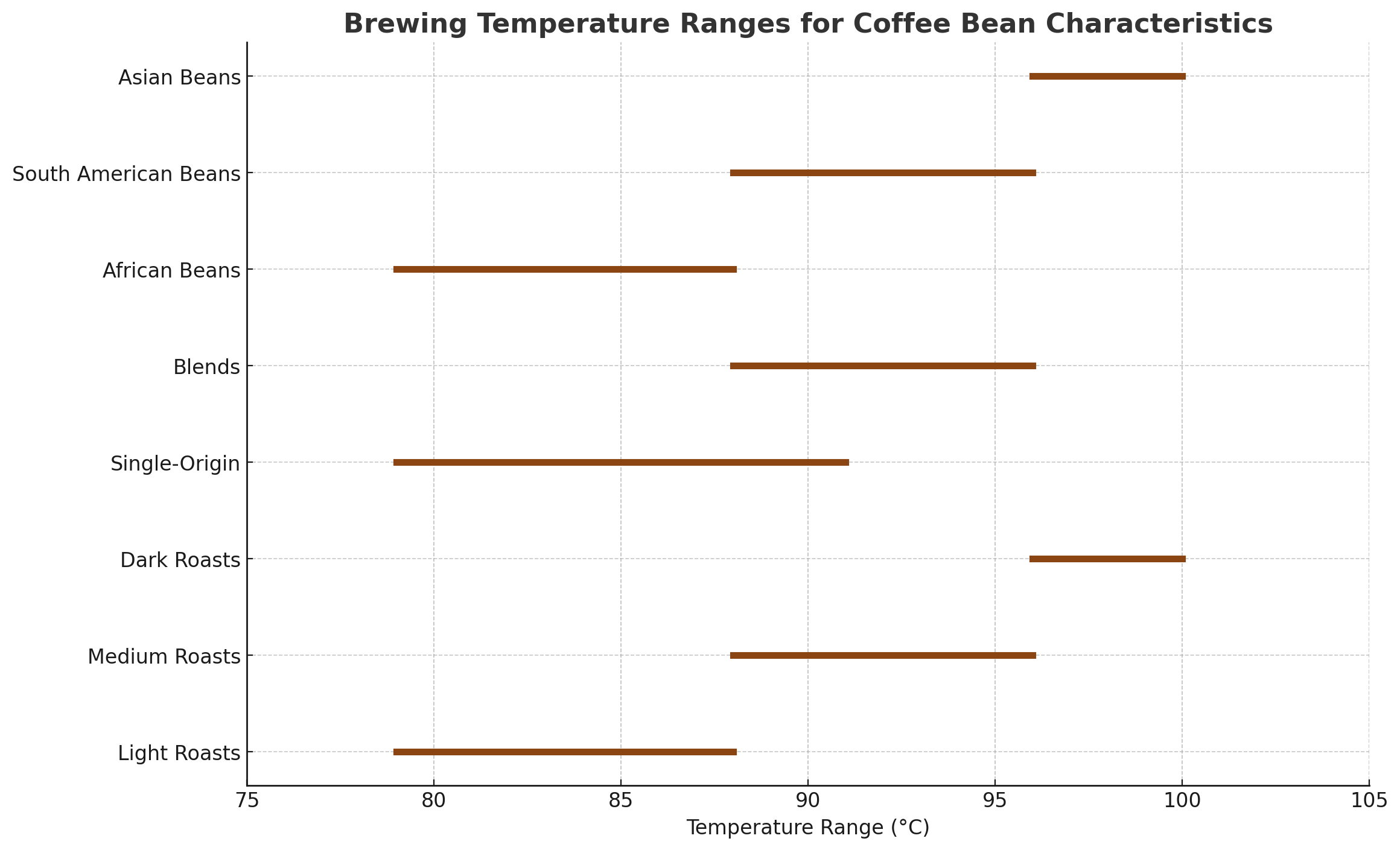
By matching the brewing temperature to the bean’s roast, origin, and flavour profile, you can unlock flavours you might not have experienced otherwise. This approach allows you to appreciate each cup’s unique qualities, from a bright and fruity light roast to a dark, chocolatey espresso. Experimenting with temperature is a key to finding your ideal flavour match!
Practical Tips for Experimenting with Temperature
Now that you know how temperature impacts coffee flavour, it’s time to put that knowledge into practice. Experimenting with temperature can help you discover your ideal cup, but getting started may seem tricky. Here are some practical tips to help you adjust brewing temperature and unlock new flavours.
1. Use a Thermometer for Precision
Consistency is key to understanding how each adjustment affects flavour. Using a thermometer gives you precise control over your water temperature, allowing you to replicate your results and tweak them as needed.
Tip: Many kettles now come with built-in thermometers or temperature settings, but if not, a simple kitchen thermometer works perfectly for accuracy.
2. Start with Small Adjustments
A few degrees can make a noticeable difference in flavour. If you’re unsure where to begin, start with the recommended range for your brewing method and adjust in small increments of 2-3°F.
Tip: Taste your coffee after each change and note how flavours shift. You might find that just a small adjustment can create the perfect balance.
3. Pair Temperature Adjustments with Brew Time
Temperature and time are interdependent. Higher temperatures speed up extraction, so if you increase the heat, consider reducing the brew time slightly to avoid over-extraction.
Tip: If you’re lowering the temperature, try a longer brew time to ensure enough extraction and avoid underwhelming flavours.
4. Keep a Coffee Journal
Documenting your results allows you to track your preferences and replicate great brews. Write down the temperature, brew time, and any flavour notes each time you try something new.
Tip: Record details like roast type, bean origin, and grind size as well. This will help you identify patterns and create a reference for future brews.
5. Experiment with Different Beans and Roasts
The ideal temperature varies depending on the beans you’re using. Try experimenting with different beans—light, medium, and dark roasts or single origins vs. blends—to see how each one reacts to various temperatures.
Tip: Use light roasts at lower temperatures to explore brightness and fruity flavours, or try higher temperatures on dark roasts to emphasize depth and body.
6. Be Mindful of Water Quality
The quality of your water affects extraction as much as temperature does. Filtered or soft water is ideal, as it allows the coffee’s flavours to shine without adding unwanted minerals or chemicals.
Tip: If you’re experimenting with different temperatures, try to use the same quality of water each time to ensure the results are solely due to temperature changes.
7. Trust Your Taste Buds
There’s no “perfect” temperature that works for everyone. Personal preference is important, so if you enjoy a specific flavour balance, stick with it!
Tip: Don’t be afraid to trust your taste buds. Coffee brewing is about finding what tastes best to you, so embrace your personal preferences and enjoy the journey.
Experimenting with temperature can open up new dimensions of flavour in your coffee. By starting with small adjustments, keeping a record, and trusting your taste, you’ll soon become skilled at customizing each cup to bring out the flavours you love most. Enjoy the process, and remember, the perfect brew is the one that delights you!
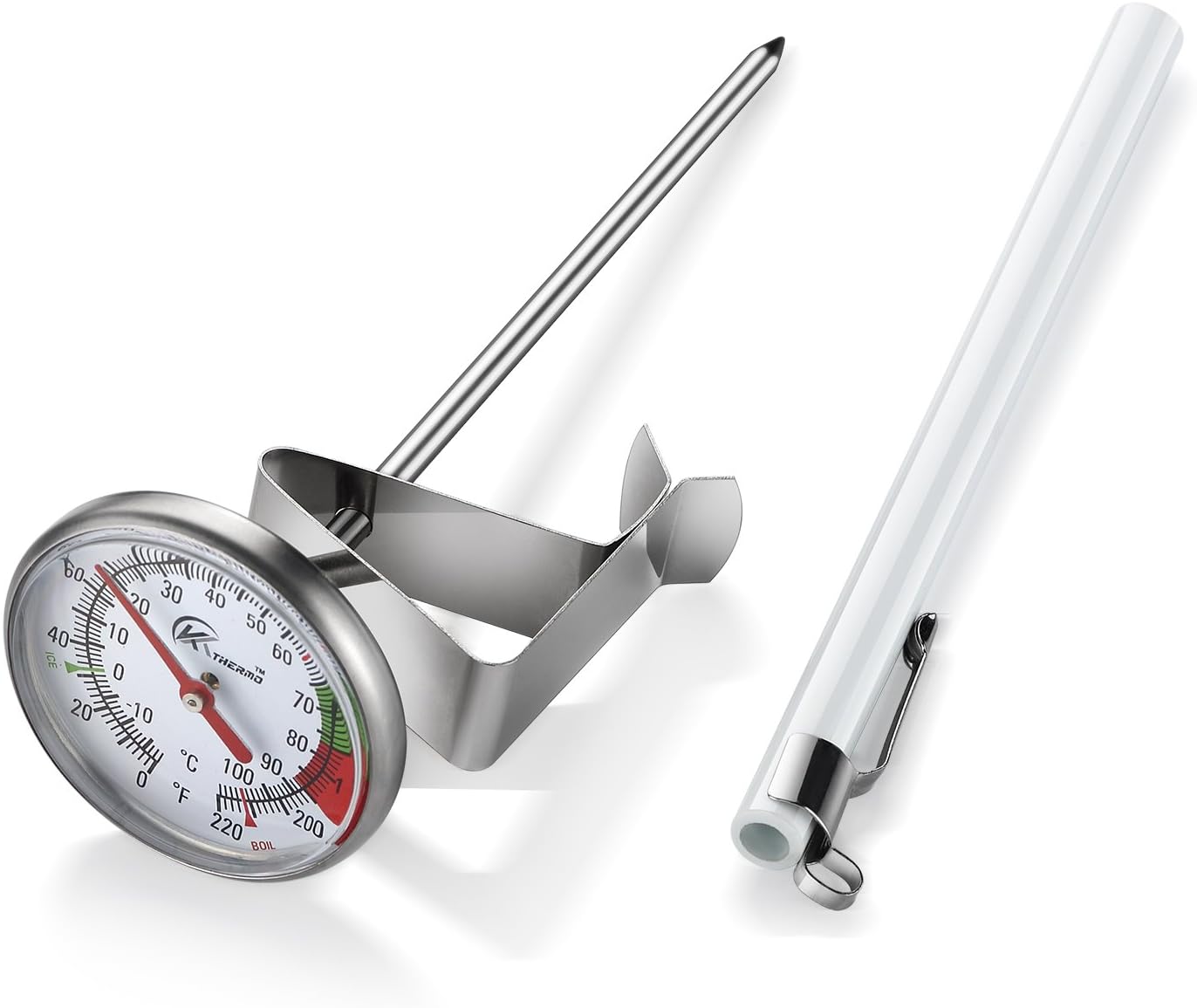
Search Coffee Thermometer on Amazon
Get that Perfect Temperature for You
Brewing the perfect cup of coffee is as much a science as it is an art, with temperature at the heart of the experience. By understanding how different temperatures impact flavour, body, and acidity, you’re equipped to bring out the best in every type of bean, roast, and brewing method. Whether you’re after the bright, fruity notes of a light roast or the deep, bold flavours of a dark roast, adjusting the temperature lets you tailor your coffee to your unique taste.
Remember, there’s no one-size-fits-all approach—experimentation is key. With a little patience and curiosity, you can explore the full spectrum of coffee flavours, discovering new favourites along the way. So grab your thermometer, pour yourself a cup, and enjoy the journey to finding your perfect brew. Happy brewing!
